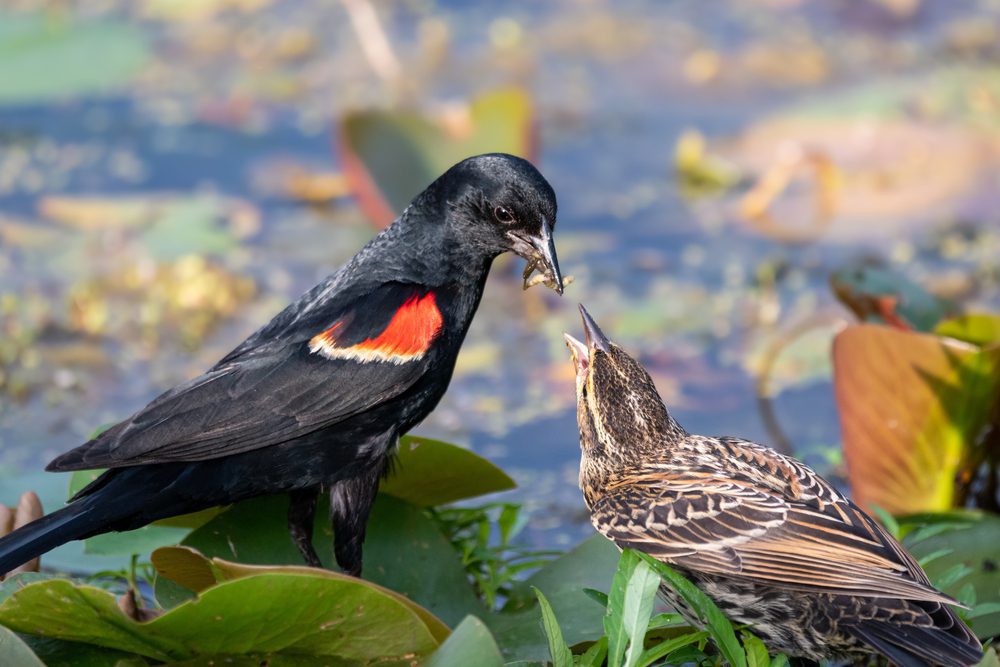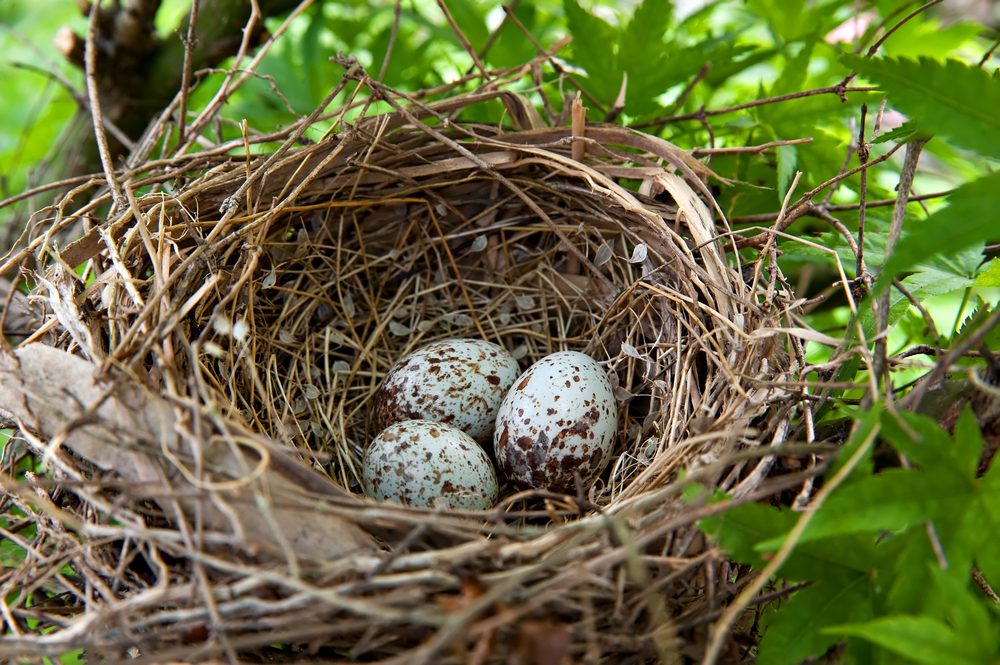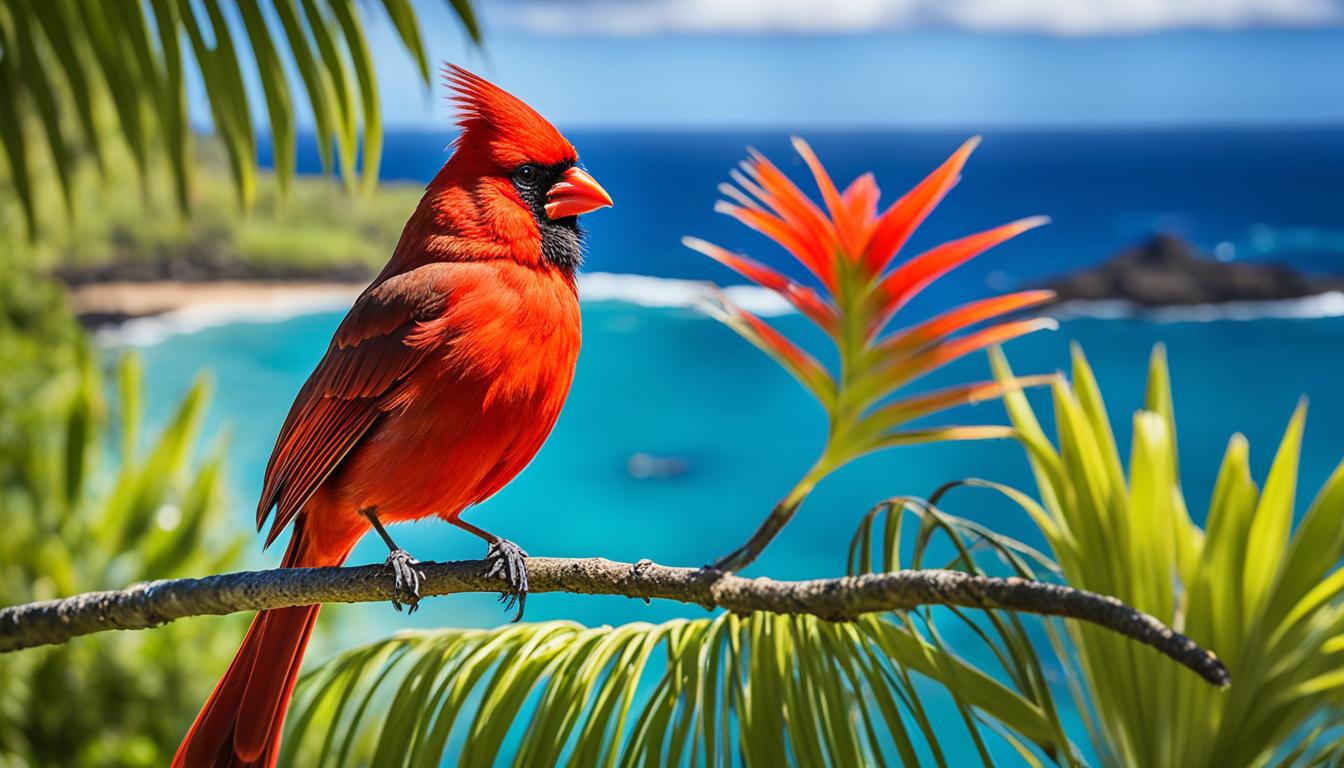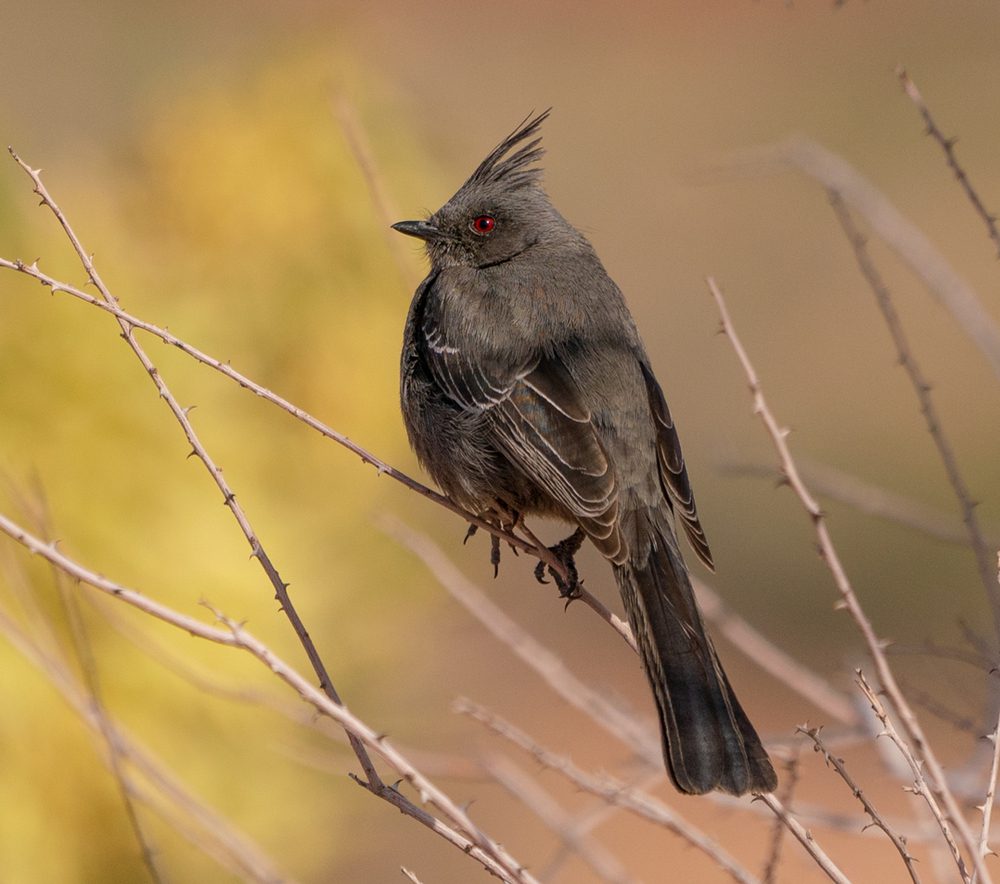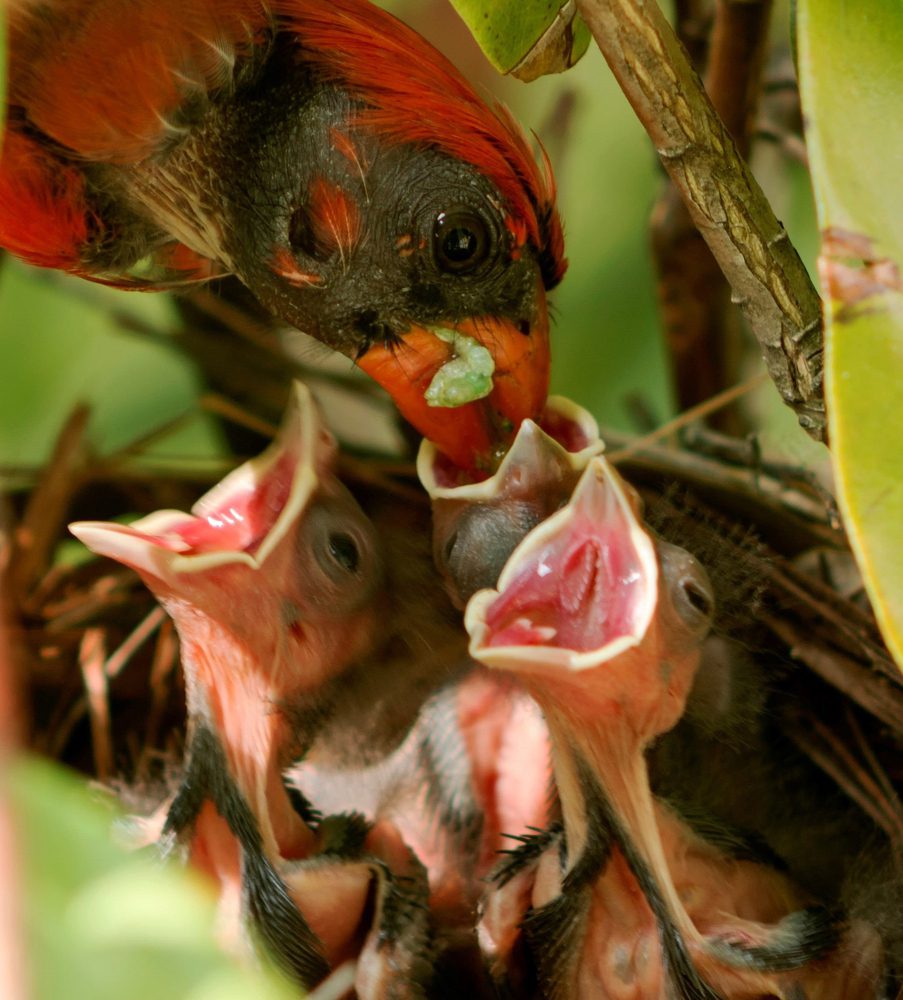Ever mistaken a sparrow for a red-winged blackbird? You’re not alone!
Spotting a flash of red and black feathers fluttering through the reeds is exciting, but identifying that bird can be tricky, especially for beginners. Red-winged blackbirds are common, but their female counterparts and similar species can throw you off.
Don’t worry, birding buddies! This guide is here to help. We’ll unveil the top 10 birds Similar to Red-Winged Blackbird, highlighting their key differences so you can confidently add them to your birding list. 🪶 No more confusing sparrows for sassy blackbirds!
So, grab your binoculars, put on your birding hat (optional, but stylish!), and let’s embark on a journey to become confident bird watchers!
Table of Contents
Tricolored Blackbird
The Tricolored Blackbird (Agelaius tricolor) is a bird species similar to the Red-Winged Blackbird, and they share a number of characteristics. Both birds are members of the blackbird family, and are known for their striking appearance and lively behaviors.


Similarity
One key similarity between Tricolored Blackbirds and Red-Winged Blackbirds is their habitat preference. Tricolored Blackbirds are found primarily in California [1].
Like Red-Winged Blackbirds, they can be found in various wetland environments, such as marshes, swamps, and flooded agricultural fields. The breeding season for both species often occurs simultaneously, and they can even be found nesting together at times.
In terms of appearance, the Tricolored Blackbird closely resembles the Red-Winged Blackbird, but with notable differences. Male Tricolored Blackbirds are solid black with a vibrant red shoulder patch, similar to their Red-Winged Blackbird counterparts.
Differences
However, the red patch on the Tricolored Blackbird is bordered by a contrasting white band, whereas Red-Winged Blackbirds sport a yellow border. Female Tricolored Blackbirds, like their Red-Winged Blackbird counterparts, are more subdued in coloration, featuring brownish feathers tinged with a rusty hue.
Tricolored Blackbirds exhibit a highly social nature and are known to form dense breeding colonies. While Red-Winged Blackbirds also form colonies, Tricolored Blackbirds tend to gather in larger groups, with thousands of individuals nesting in close proximity. This can make it particularly challenging for conservation efforts, as efforts to protect one location may not be sufficient to safeguard the entire population.
In summary, the Tricolored Blackbird shares many similarities with the Red-Winged Blackbird, such as habitat preference, and appearance. However, distinguishing features like the white-bordered red patch on males, and their tendency to form denser breeding colonies, set the Tricolored Blackbird apart as a unique and fascinating species in its own right.
Red-shouldered Blackbird
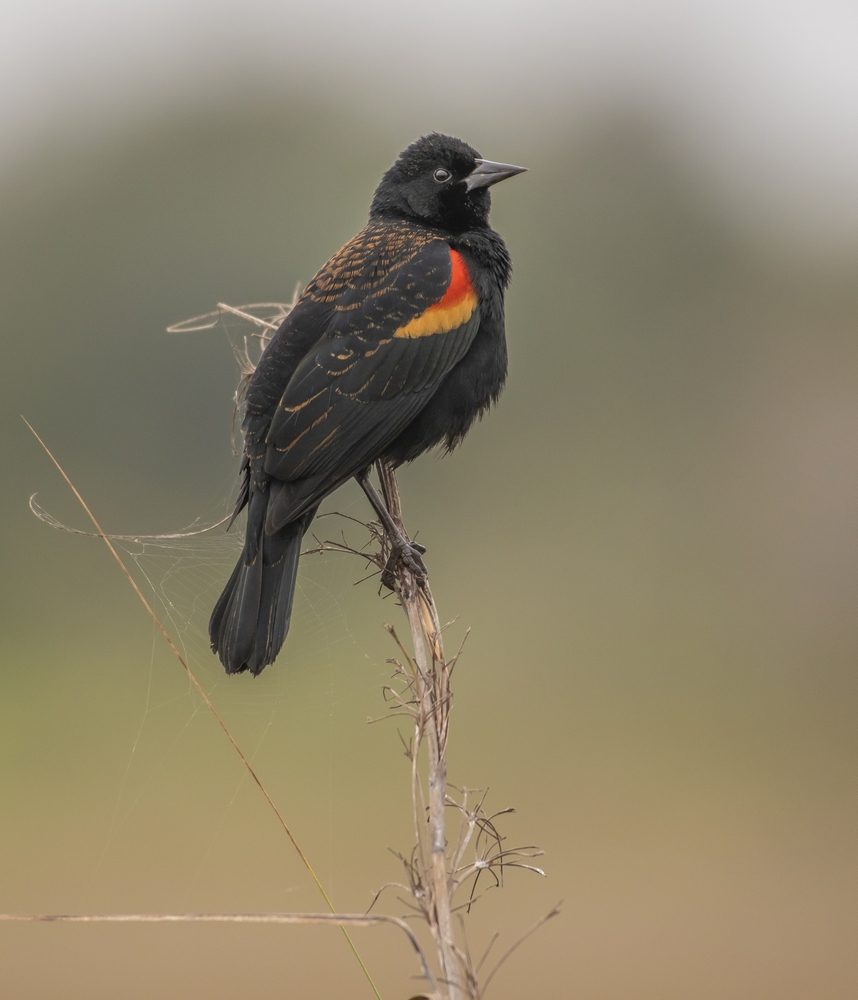
The Red-shouldered Blackbird (Agelaius assimilis), resembling the Red-winged Blackbird (Agelaius phoeniceus), is another fascinating bird species that enthusiasts may be keen to learn more about. The two birds share some similarities in their characteristics, but they also have distinct differences that make them unique.
Similarity
One of the striking similarities between both species is their vibrant red patches displayed on the shoulders. This similarity can often cause confusion when identifying these birds out in the field. However, keen observers will notice that the Red-shouldered Blackbird exhibits a more extensive red patch that covers nearly the entire shoulder, while the Red-winged Blackbird has a smaller patch.

The Red-shouldered Blackbird inhabits marshy habitats, notably in Cuba and the Isla de la Juventud [2]. This geographical limitation makes it harder to spot outside its native range compared to the widespread Red-winged Blackbird.
Differences
Although both species are predominantly black, the Red-shouldered Blackbird has a slightly lighter body coloration, leaning more towards a dark chocolate hue, while the Red-winged Blackbird is a pure glossy black.
In terms of size, the Red-shouldered Blackbird is smaller than the Red-winged Blackbird. On average, the Red-shouldered species measures 7 to 8 inches (18-20 cm) in length, while the Red-winged Blackbird ranges between 8.3 to 9.4 inches (21-24 cm).
Additionally, the songs and calls of these two birds differ. The Red-shouldered Blackbird’s song is described as a sharp and nasal “chak” or “cheer” sound, contrasting with the Red-winged Blackbird’s more melodious, gurgling, and complex song that can be characterized as “konk-a-ree” or “o-ka-leee.”
To recap, the Red-shouldered Blackbird shares a similar shoulder pattern and preference for marshy habitats with the Red-winged Blackbird. However, the extent of the red shoulder patch, body coloration, size, vocalizations, and geographical distribution set these two species apart, making it interesting to study their distinct traits and appreciate the rich variety of avian life.
Tawny-shouldered Blackbird
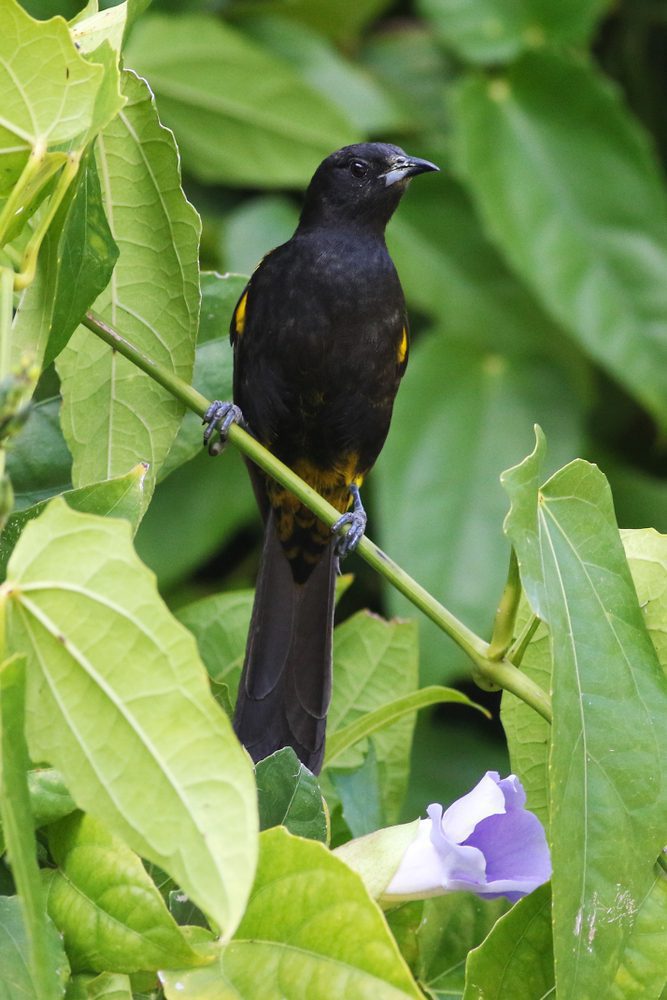
The Tawny-shouldered Blackbird (Agelaius humeralis) is a species that closely resembles the Red-winged Blackbird in many ways. Both birds belong to the same genus, Agelaius, and share similar appearances and behaviors. They are medium-sized birds with predominantly black plumage, which makes them easily identifiable.
Similarity
A key similarity between the two species is the presence of brightly colored markings on their shoulders. While the Red-winged Blackbird is known for its striking red and yellow patches, the Tawny-shouldered Blackbird sports a more subtle yet equally beautiful tawny-orange color on its shoulders. These markings serve as an essential communication tool among both species, particularly during the breeding season.

Differences
However, there are some noticeable differences in the distribution and habitat preferences between these two birds. The Tawny-shouldered Blackbird is primarily found in the Caribbean, specifically in Cuba and Hispaniola. Red-winged Blackbirds, on the other hand, are more widespread across North America.
Tawny-shouldered Blackbirds are known to inhabit a variety of habitats, including grasslands, savannas, and shrublands. They are often found in areas with tall grasses and scattered trees, which provide them with suitable nesting sites. This preference for similar habitats is another shared trait with the Red-winged Blackbird, as they are known to inhabit various grassy and wetland environments.
In terms of feeding habits, both species exhibit a largely omnivorous diet consisting of seeds, grains, insects, and occasionally fruits. However, Tawny-shouldered Blackbirds tend to prefer fruit more than their red-winged counterparts, often seen perching on fruiting trees and consuming large quantities of berries.
To summarize, the Tawny-shouldered Blackbird is a close relative of the Red-winged Blackbird, sharing many similarities in appearance, habitat preferences, and feeding habits. The primary differences between these species lie in their geographic distribution and the subtle variation in the coloration of their shoulder markings. Both species provide fascinating insights into the diverse and adaptive nature of Agelaius birds.
Shiny Cowbird
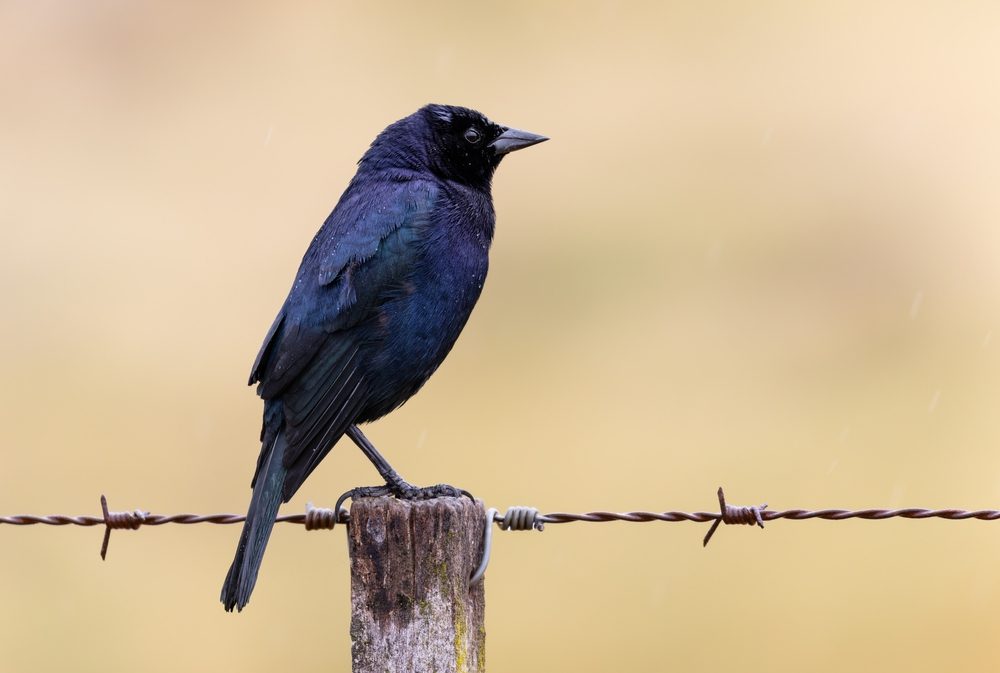
The Shiny Cowbird (Molothrus bonariensis) shares some striking similarities with the Red-Winged Blackbird, making it an interesting species to examine in the context of birds with comparable features. Shiny Cowbirds are native to Central and South America, but they have been expanding their range and can now be found in parts of the Caribbean and southern Florida.
Similiarity
One notable similiarity between the Shiny Cowbird and the Red-Winged Blackbird is their sexual dimorphism. Both species display marked differences between males and females in terms of size, coloration, and plumage. The male Shiny Cowbird possesses an iridescent black plumage with a blue-purple sheen, while the female exhibits a dull brown color. In comparison, male Red-Winged Blackbirds have a black body with red and yellow shoulder patches, whereas females are brownish overall.
Differences
In terms of differences, the Shiny Cowbird primarily stands out with its brood parasitism behavior. Unlike Red-Winged Blackbirds, which build their own nests and raise their offspring, Shiny Cowbirds are known to lay their eggs in the nests of other birds. This allows them to evade the responsibility of parenting, as the host bird unwittingly incubates and cares for the Shiny Cowbird’s eggs alongside its own.
Additionally, the habitats of these two species differ. Although both birds can be found in open habitats, the Shiny Cowbird is more commonly observed in agricultural areas and grasslands, while Red-Winged Blackbirds prefer wetlands and marshes.
In summary, the Shiny Cowbird exhibits both similarities and differences in comparison to the Red-Winged Blackbird. While they share some aspects of sexual dimorphism, they differ significantly when it comes to brood parasitism and preferred habitats. The intriguing combination of traits makes the Shiny Cowbird a fitting subject for further exploration among birds resembling the Red-Winged Blackbird.
Screaming Cowbird

Screaming Cowbird (Molothrus rufoaxillaris) is a passerine bird species mainly found in South America. Similar to the Red-winged Blackbird, it belongs to the family Icteridae.
Similarity
Both species share some common physical traits like iridescent black plumage and distinctive vocalizations. However, the Screaming Cowbird does not have the characteristic red shoulder patch found in Red-winged Blackbirds.
These birds inhabit a range of ecosystems such as grasslands, wetlands, and forests. They are commonly found in countries like Brazil, Argentina, Bolivia, Paraguay, and Uruguay. The distribution of the Screaming Cowbird may overlap with Red-winged Blackbirds in some regions.
Differences
One significant difference in breeding behavior is that the Screaming Cowbird is a brood parasitic species, while the Red-winged Blackbird is not. This means that Screaming Cowbirds do not build their nests but instead lay their eggs in the nests of other bird species. They rely on the host birds to incubate and care for their eggs and offspring. On the other hand, Red-winged Blackbirds build their nests in dense marsh vegetation, and the female birds incubate their eggs.
While sharing features like iridescent black plumage and inhabiting similar ecosystems, the Screaming Cowbird and the Red-winged Blackbird display some differences in appearance, breeding, and feeding habits. These distinctions set them apart as unique species within the Icteridae family.
Brewer’s Blackbird
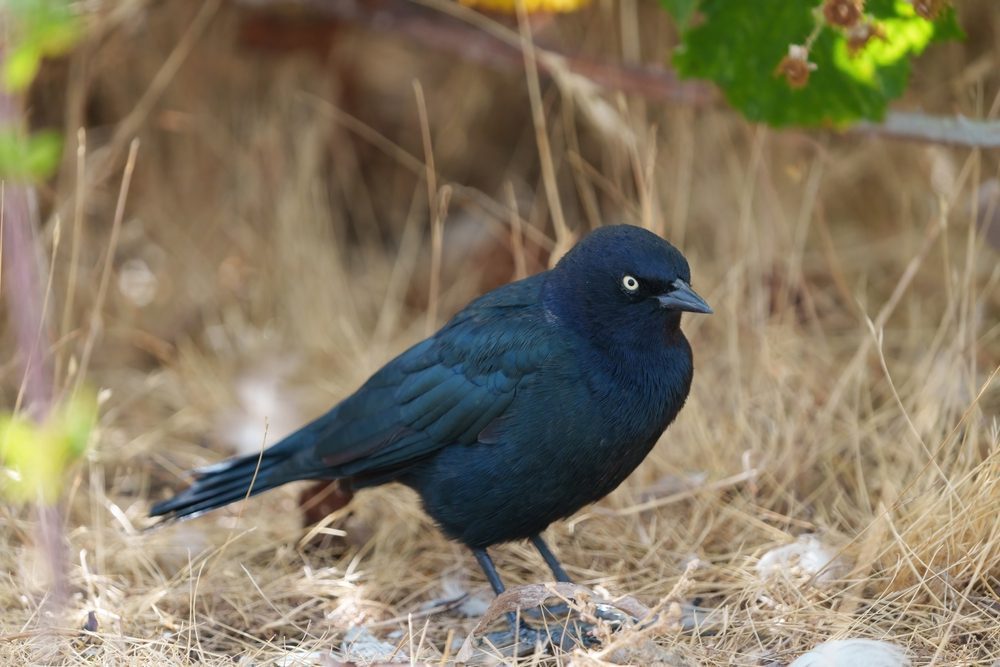
The Brewer’s Blackbird (Euphagus cyanocephalus) is a medium-sized bird that bears remarkable resemblance to the Red-Winged Blackbird. They can be found in open habitats, including grasslands, farmlands, and city parks throughout western North America.
Similarity
Both the Brewer’s Blackbird and the Red-Winged Blackbird belong to the Icteridae family. They share common features such as their black plumage, omnivorous diets, and similar nesting habits. The breeding range of the Brewer’s Blackbird also overlaps with that of the Red-Winged Blackbird in certain areas.
Differences
Despite their similarities, these two species have noticeable differences. For instance, male Brewer’s Blackbirds display iridescent purple-blue head feathers, while male Red-Winged Blackbirds have a distinctive red and yellow patch on their wings.
Female Brewer’s Blackbirds are distinguished by their dark brown color, while female Red-Winged Blackbirds are lighter with streaky patterns. Additionally, Brewer’s Blackbirds are generally more adaptable to urban environments than the Red-Winged Blackbird.
In summary, the Brewer’s Blackbird is a fascinating member of the Icteridae family that shares several features with the Red-Winged Blackbird. Despite these similarities, key differences in physical appearance and habitat preferences can help bird enthusiasts recognize each species distinctly.
Clay-Colored Sparrow
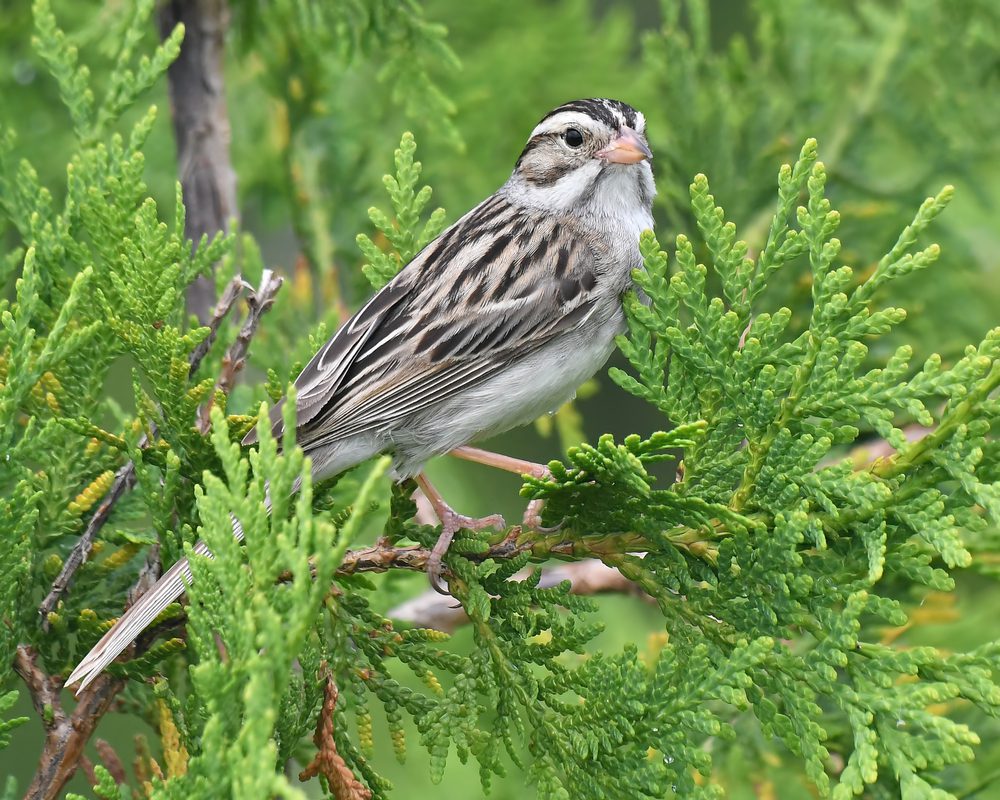
The Clay-Colored Sparrow (Spizella pallida) is another bird species that shares some similarities with the Red-Winged Blackbird. While not as striking in appearance as the Red-Winged Blackbird, they are still quite fascinating to observe.
Similarity
A similarity between the Clay-Colored Sparrow and the Red-Winged Blackbird is their respective diets. Both species primarily feed on seeds and insects. However, the Clay-Colored Sparrow prefers foraging on the ground and in low vegetation, as opposed to the Red-Winged Blackbird’s affinity for perching and picking insects from reeds and cattails.
Differences
One of the key differences between these two birds is their size. Clay-Colored Sparrows are noticeably smaller, measuring between 4.7 to 5.9 inches in length. They also possess a distinctive facial pattern, with a bold, white-bordered brown stripe running through the eye, contrasting with the pale gray face and underparts. The overall coloration is a mix of brown, black, and pale gray, somewhat reminiscent of the Red-Winged Blackbird.

When it comes to habitat, Clay-Colored Sparrows prefer grassy and shrubby areas, unlike the wetlands frequented by Red-Winged Blackbirds. Their breeding range extends from the Great Basin and northern Midwest through Canada’s Prairies and Central Plateau. During migration and winter, they can be found in Texas and Mexico’s highlands.
In summary, while the Clay-Colored Sparrow bears some similarities to the Red-Winged Blackbird, they are distinct in terms of size, appearance, habitat preference, and vocalizations. Both species are intriguing to observe and provide a great opportunity for birdwatchers to appreciate the diversity of North America’s avian fauna.
Song Sparrow

Song Sparrow (Melospiza melodia) is a bird species that shares some similarities with the Red-Winged Blackbird, making it an interesting comparison for bird enthusiasts. They are both commonly found in North America and have unique, recognizable songs.
Similarity
Similar to Red-Winged Blackbirds, Song Sparrows are known for their distinct vocalizations. Their song consists of a combination of trills, whistles, and buzzes, which can vary regionally. While Red-Winged Blackbirds have a more sharp and harsh call, Song Sparrows have a more melodious and sweet tone.
In terms of habitat, Song Sparrows prefer grasslands, shrublands, and marsh edges. They can also be found in urban and suburban areas with dense vegetation, similar to the wetlands and marshes where Red-Winged Blackbirds often dwell. Both bird species have adapted well to human disturbances, making them a common sight around neighborhoods and parks.
Differences
As for physical appearances, some key differences between the two species include:
- Size: Song Sparrows are generally smaller in size compared to Red-Winged Blackbirds, with an average body length of 5-6 inches (12-15 cm).
- Coloration: Song Sparrows have a predominantly brown and streaky pattern on their body, while Red-Winged Blackbirds are black with distinctive red patches on their wings.
- Sexual dimorphism: Unlike Red-Winged Blackbirds, whose males and females exhibit significant differences in plumage, Song Sparrows display more subtle differences between sexes. Males tend to have darker and more prominent streaks, while females have lighter and less defined markings.
In conclusion, the Song Sparrow is a fascinating bird species that exhibits some similarities with the Red-Winged Blackbird, notably their vocalizations and shared habitats. However, their differences in size, coloration, and sexual dimorphism make them distinct species for birdwatchers and enthusiasts to observe and enjoy.
Common Grackle
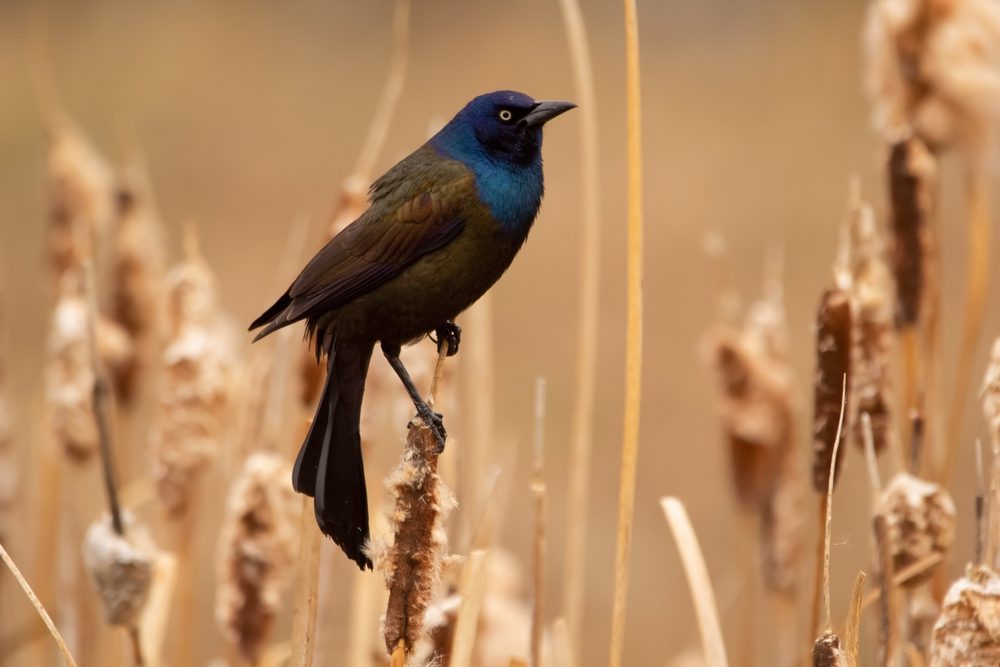
The Common Grackle (Quiscalus quiscula) is a bird species that resembles the Red-Winged Blackbird in several ways. Both species are known for their striking appearance, vocalizations, and social behavior. The Common Grackle, like the Red-Winged Blackbird, can be found throughout North America, primarily in areas with open landscapes such as wetlands, agricultural fields, and urban parks.
Similarity
One of the main similarities between the Common Grackle and the Red-Winged Blackbird is their iridescent black plumage. The Grackle has a slightly larger build, with a longer tail and a more robust body. Their head and neck display a blue-purple iridescence, while the Red-Winged Blackbird exhibits a more uniform shade of black and a signature red patch on their shoulders.
In terms of habitat, both species often share the same environments and can sometimes be found close to each other. They both have a preference for wetlands, marshes, and fields, but the Common Grackle is more likely to be found in urban and suburban areas, taking advantage of human-made resources.
Their vocalizations are another similarity, with both birds emitting a harsh and distinctive call. Although the sounds may be similar to an untrained ear, the Common Grackle’s call tends to be more metallic and slightly longer than that of the Red-Winged Blackbird.
Differences
Differences between these two species, apart from their appearance, mainly lie in their feeding habits. While Red-Winged Blackbirds are primarily insectivorous, the diet of the Common Grackle is more varied, as they are known to consume insects, seeds, fruits, and even small vertebrates.
To summarize, the Common Grackle shares a number of characteristics with the Red-Winged Blackbird, such as their eye-catching appearance, habitat preferences, and vocalizations. However, their differences in size, coloration, and feeding habits make them distinct species that can be easily distinguished with some observation.
Rusty Blackbird

The Rusty Blackbird (Euphagus carolinus) is a species closely related to the Red-winged Blackbird.
Similarity
One of the similarities between these two birds is their overall black plumage. However, the Rusty Blackbird displays a more mottled appearance due to the rust-colored feather edges, particularly during the breeding season.
In terms of habitat preference, Rusty Blackbirds can be found in wet areas, such as swamps and marshes, primarily in the northern regions of the United States and Canada. Their breeding range extends across the northern boreal forest, while their winter migration reaches as far south as the southeastern United States.
Differences
Differences between the Rusty Blackbird and the Red-winged Blackbird include their size, vocalizations, and social behavior. The Rusty Blackbird tends to be slightly smaller than the Red-winged Blackbird. Their vocalizations are also distinct, with the Rusty Blackbird having a more musical, melodious song, whereas the Red-winged Blackbird is more famous for its loud, distinctive ‘conk-la-ree!’ call.
In terms of social behavior, Rusty Blackbirds are generally less gregarious than their Red-winged counterparts. While Red-winged Blackbirds are known for their large flocks and conspicuous displays, Rusty Blackbirds tend to be more solitary or found in smaller groups outside of the breeding season.
To sum up, the Rusty Blackbird shares some similarities with the Red-winged Blackbird in terms of appearance and preferred habitat. However, their size, vocalizations, and social behavior showcase notable differences that make them a unique and fascinating species in their own right.

